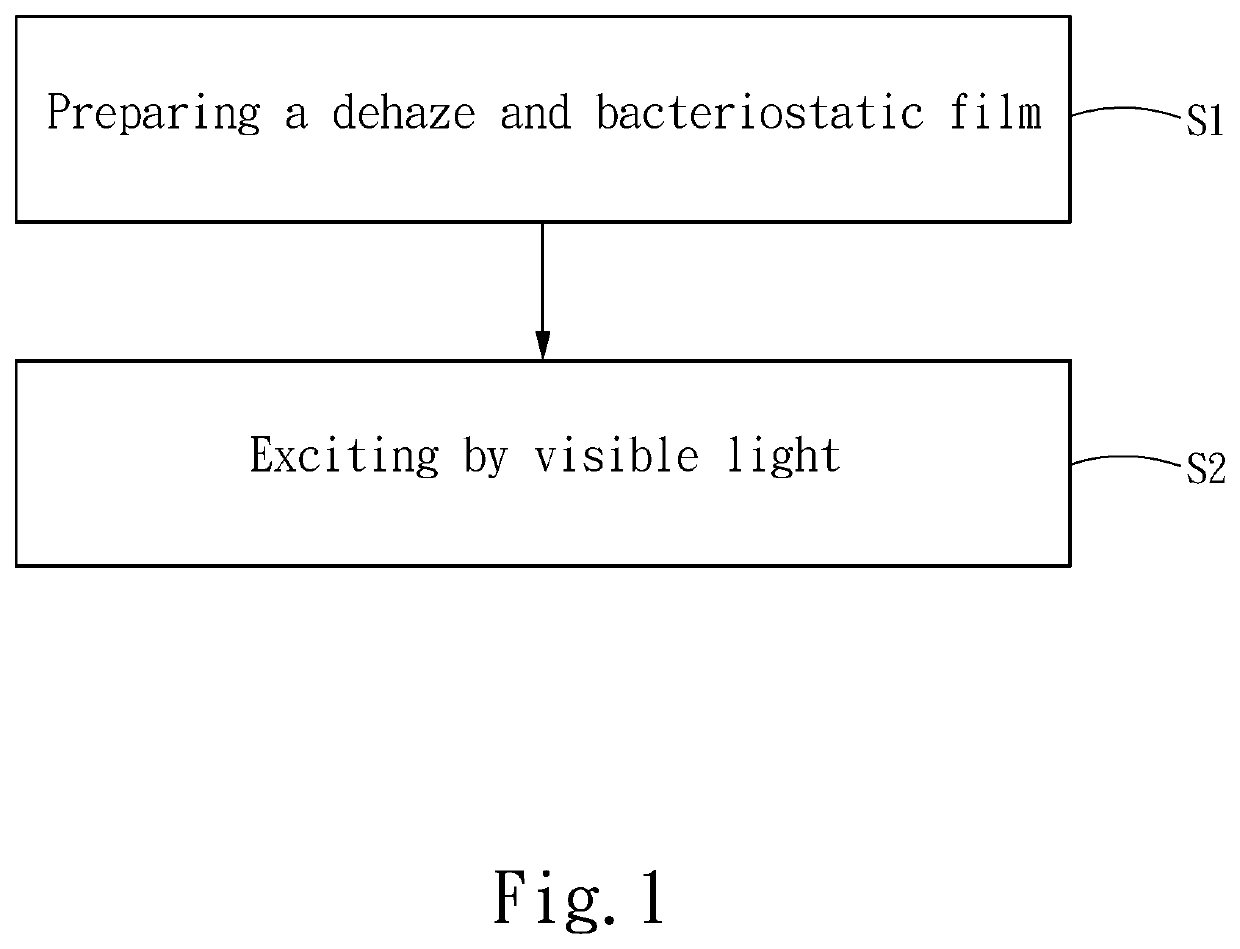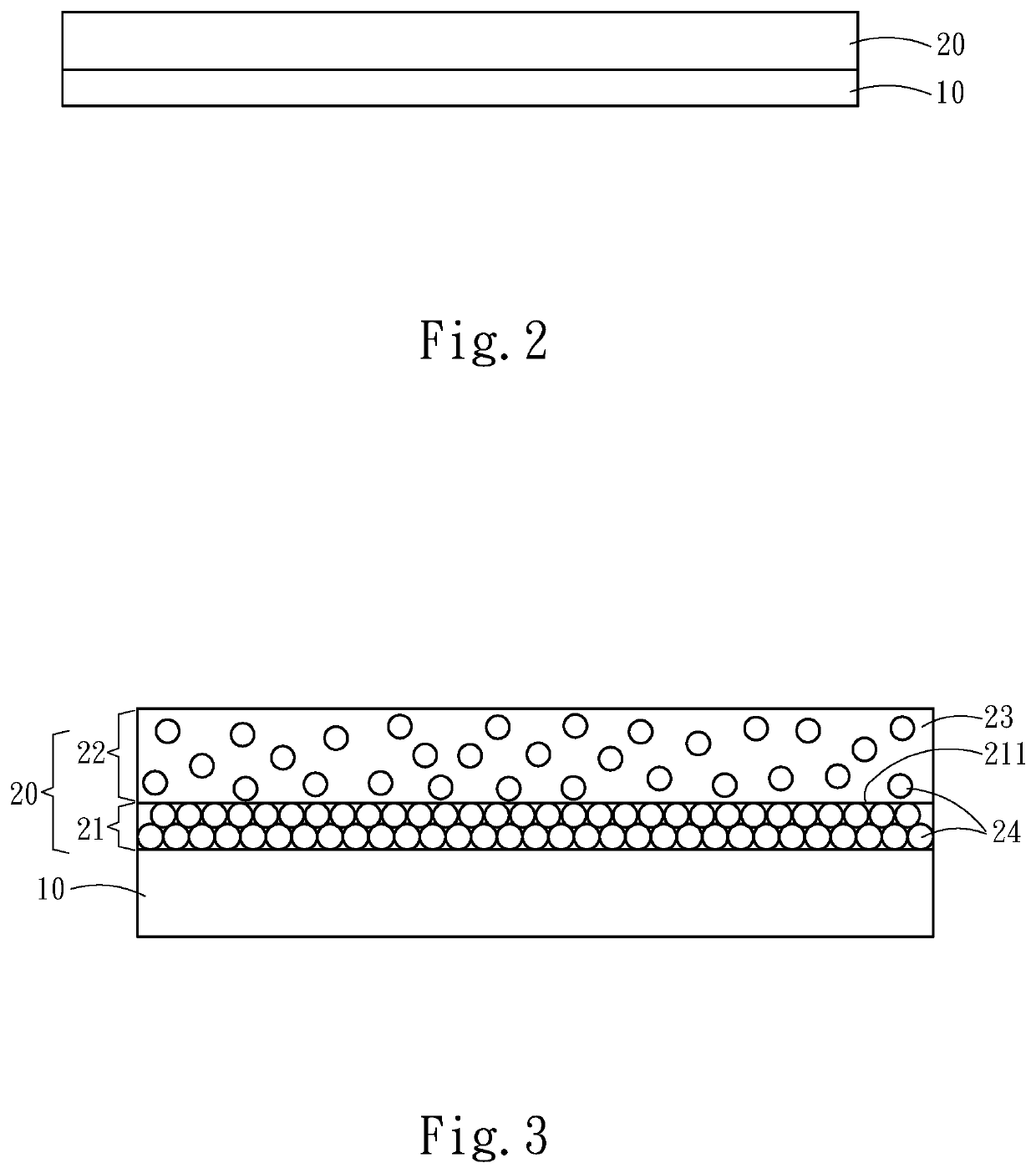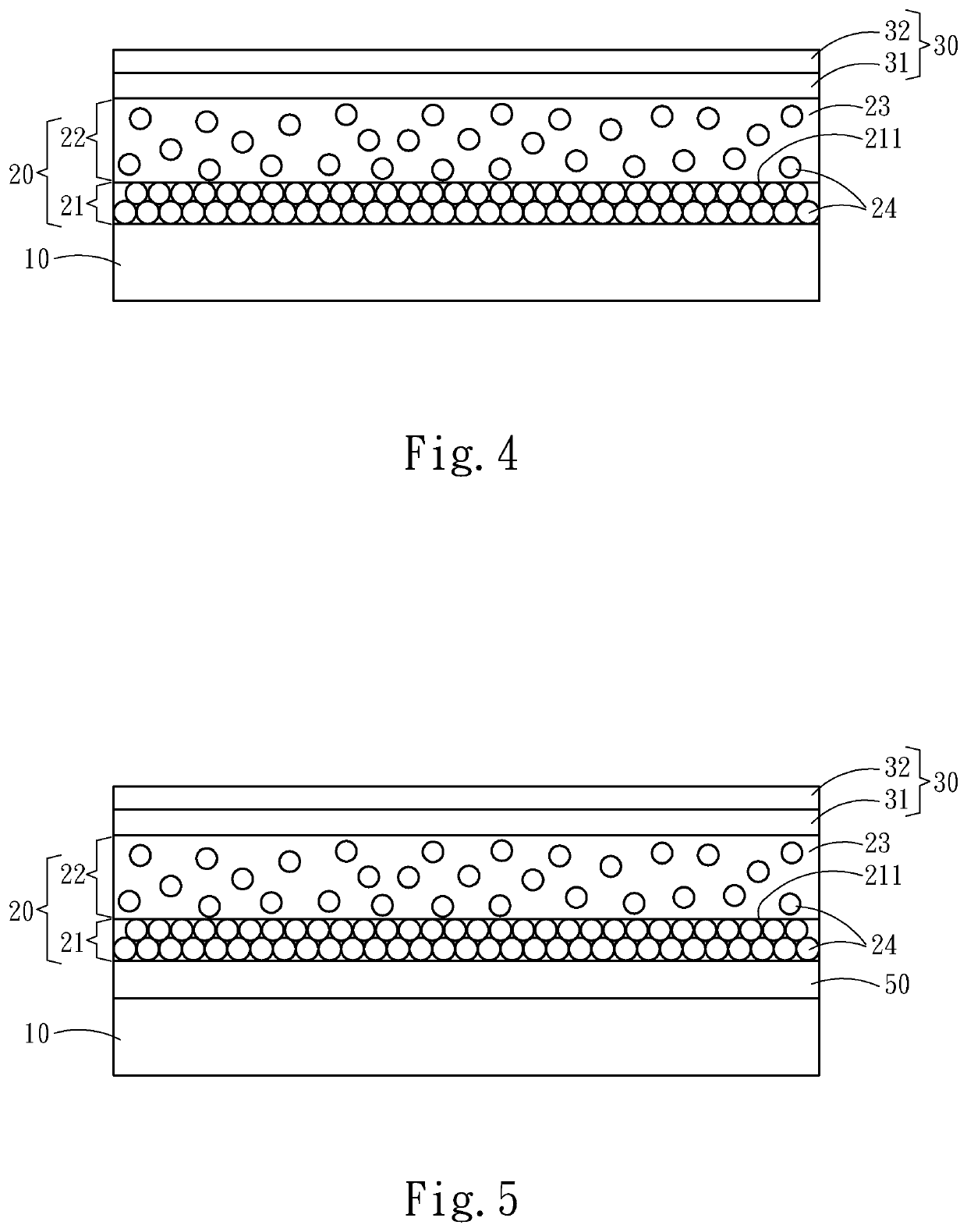Method for removing haze and inhibiting bacteria
a technology of haze and bacteria, applied in the direction of disinfection, water installations, construction, etc., can solve the problems of affecting consuming a lot of resources, and gradually losing the effectiveness of bacteria, so as to reduce the amount of haze and inhibit the growth of bacteria in the surrounding environment. , the effect of removing haz
- Summary
- Abstract
- Description
- Claims
- Application Information
AI Technical Summary
Benefits of technology
Problems solved by technology
Method used
Image
Examples
first embodiment
[0023]Please refer to FIG. 1, the present invention is a method for removing haze and inhibiting bacteria, comprising step S1: preparing a dehaze and bacteriostatic film, and step S2: exciting by visible light. Please refer to FIG. 2 and FIG. 3 for the dehaze and bacteriostatic film. The dehaze and bacteriostatic film comprises a substrate material layer 10 and a composite surface plasmon layer 20. The composite surface plasmon layer 20 is formed on the substrate material layer 10.
[0024]The composite surface plasmon layer 20 includes a particle stacked film layer 21 and a particle suspension layer 22. In detail, the particle stacked film layer 21 is located on the substrate material layer 10, and the particle suspension layer 22 is located on the particle stacked film layer 21.
[0025]Furthermore, a surface 211 of the particle stacked film layer 21 opposite to the substrate material layer 10 releases a plurality of unsteady-state nanoparticles 24. The plurality of unsteady-state nanop...
fifth embodiment
[0041]Please refer to FIG. 7 for the dehaze and bacteriostatic film of the present invention. A surface 212 of the particle stacked film layer 21 adjacent to the substrate material layer 10 releases the plurality of unsteady-state nanoparticles 24. The unsteady-state nanoparticles 24 infiltrate or diffuse into the substrate material layer 10 in a chemical or physical manner to form an additional particle suspension layer 11. In a manufacturing process, the particle stacked film layer 21 is formed on the substrate material layer 10 by spraying, immersion, blade coating, roll coating, adsorption, spin coating, etc., or formed under environments such as high heat, high pressure, vacuum, etc., and the plurality of unsteady-state nanoparticles 24 of the particle stacked film layer 21 infiltrate or diffuse into the substrate material layer 10 chemically or physically, and form the additional particle suspension layer 11 jointly with the substrate material layer 10.
[0042]Please refer to FI...
PUM
| Property | Measurement | Unit |
|---|---|---|
| particle size | aaaaa | aaaaa |
| particle size | aaaaa | aaaaa |
| haze | aaaaa | aaaaa |
Abstract
Description
Claims
Application Information
 Login to View More
Login to View More - R&D
- Intellectual Property
- Life Sciences
- Materials
- Tech Scout
- Unparalleled Data Quality
- Higher Quality Content
- 60% Fewer Hallucinations
Browse by: Latest US Patents, China's latest patents, Technical Efficacy Thesaurus, Application Domain, Technology Topic, Popular Technical Reports.
© 2025 PatSnap. All rights reserved.Legal|Privacy policy|Modern Slavery Act Transparency Statement|Sitemap|About US| Contact US: help@patsnap.com



